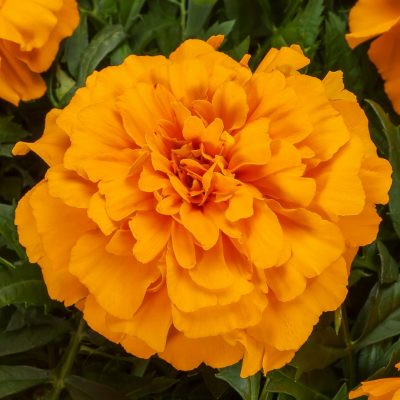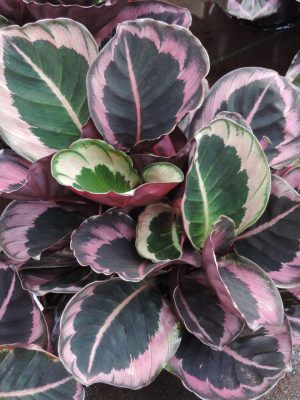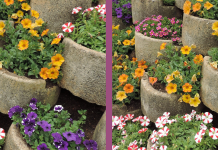Keep your garden colourful with a flush of sunset gold flowers, large rose-painted leaves and sweet red fruit
Watermelon Sugar Baby may not be a vegetable but the only place to grow it is in the veggie garden. If sown this month, after the last frost, this baby watermelon with its deliciously cool, sweet red flesh, will be ready for harvesting in December, just in time for the holiday season.

It is called the ice-box melon because its fruit is small enough to fit into the refrigerator. Like other watermelons, however, it needs space to grow although plants don’t extend quite as much as normal watermelons. It is only pollinated by bees so plant some bee friendly flowers nearby.
To grow: Sow directly into the soil, which has been well-composted and fertilised. Plant three seeds to one hole (they stimulate each other to germinate) and space 90 cm apart. If sown in rows, space rows 1.9m apart.
Keep the soil moist during germination, which takes seven to 14 days. Once the plants have their first true leaves, keep the strongest plant and cut off the other two shoots at soil level, to prevent disturbing the roots of the remaining plant.
Water regularly around the base of the plant so that the soil remains moist but not soggy, especially when it flowers and starts setting fruit.
Once the fruit is the size of a tennis ball, only water when the soil is dry. This concentrates the flavour of the fruit. Place the fruit on a piece of wood or similar material to prevent insect damage.
Harvesting tips: ‘Sugar Baby’ should be ready to harvest within 90 to 120 days from germination. If you are unsure, roll over the fruit and if it is a pale yellow on the underside, it should be ripe. The other indication of ripeness is when the tendril closest to the fruit appears dead and dry. Details: kirchhoffs.co.za

We’re planting… Marigold Endurance which is a new generation of marigold that combines the extra-large double flowers of African marigolds with the compact growth of French marigolds. Its other unusual feature is that it doesn’t make seedheads but keeps on producing new flowers throughout summer. As one flush of flowers is going over, the next is already growing past it. Plants are also exceptionally heat tolerant. This indestructible marigold will be the last marigold standing at the end of summer. Its flower colours are yellow, orange and sunset gold. Details: ballstraathof.co.za

Indoor plant of the month
Indoor plants with coloured leaves don’t need flowers to make them stand out. One such plant is the rose-painted Calathea (Roseopicta). The variegated leaves of the young plant are suffused with pink and when the leaves fold slightly in the evening, they display the deeper pink under-leaf. The calathea is a member of the prayer plant family that closes its leaves at night and opens them in the morning. This plant likes a humid environment and bright diffused light to bring out its leaf colours. Mist the leaves to increase humidity or place the pot on small stones in a saucer that is filled with water. Water less in winter, keeping the soil lightly moist. Details: lvgplant.co.za
Garden tasks for September
- If you didn’t fertilise the garden (including the lawn) last month, do so at the beginning of this month with an organic 5:1:5 or 8:1:5 fertiliser.
- Water deeply at least once a week
- Plant Summer and Autumn flowering bulbs such as amaryllis, arum lilies, and day lilies as well as summer annuals like begonias, dianthus, bedding dahlias, gazanias and verbena.
- Pansies, petunias, violas and primulas will continue to flower well if fed every two weeks with a liquid fertiliser.
- Water the lawn once a week and don’t cut too low at this stage to allow it to develop deeper roots.
- Get rid of existing weeds without using poison by spraying them with undiluted white vinegar (be careful not to spray too much onto the grass) or dig them out roots and all.
- Trim perennial herbs to encourage new growth for spring. Sow annual herbs like basil, rocket, coriander, chives, and dill once the danger of frost has past.
- Once the last cold spell in September is over start sowing green beans, beetroot, eggfruit, carrots, celery, cucumber, lettuce, mealies, melons, peas (last month to sow), squash, Swiss chard, and tomatoes.






